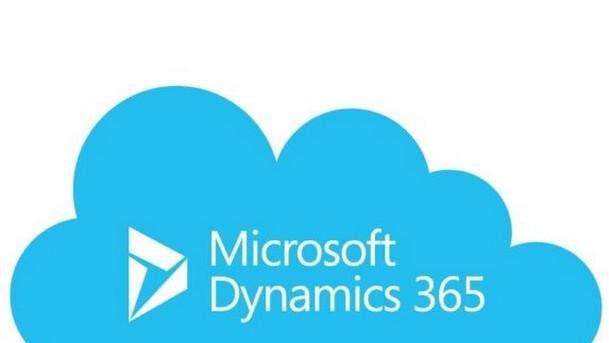4 Takeaways For Partners From Microsoft’s Earnings
Microsoft reported impressive growth measures for Power Platform, Dynamics and LinkedIn, while Azure helped drive revenues for the quarter.

Microsoft’s Azure cloud platform sales soared as the tech giant’s total revenue hit a record $41.7 billion for its most recent quarter, up 19 percent from a year ago.
The No. 2 cloud provider reported Azure sales were up 50 percent year over year as the COVID-19 pandemic continued to force organizations into digital transformation mode.
“We are building Azure to address organizations‘ needs in a multi-cloud, multi-edge world,” Microsoft CEO Satya Nadella said in a Tuesday call with analysts.
Microsoft’s commercial cloud — which includes Office 365 Commercial, Azure, LinkedIn’s commercial business, Dynamics 365 and other commercial cloud properties — generated $17.7 billion in revenue for the quarter, up 33 percent year over year.
“Many trends across industries, customer segments, and geographical markets continued to improve, which, coupled with strong execution by our sales and partner teams, drove another quarter of double-digit top and bottom-line growth,” Microsoft CFO Amy Hood told analysts Tuesday on call with analysts.
Despite the quarterly growth, the Redmond, Wash.-based tech giant’s stock traded at $256.14 at market open Wednesday, down about 2 percent from Tuesday’s market opening. Click through our slideshow to see what partners need to know.

Big Azure Growth
Azure growth drove the 26 percent, or $2.7 billion, increase in server products and cloud services revenue at Microsoft. Azure revenue grew 50 percent due to consumption-based services growth, according to Microsoft, which did not break out exact revenue numbers for Azure.
Queries performed using the Azure Synapse tool for data analytics, warehousing and integration increased 105 percent over the last quarter, Nadella said. Use of SQL Server on Azure VMs increased 129 percent year over year. And the Azure Active Directory paid custom base more than doubled year over year to more than 300,000.
For partners like the Microsoft Business Group at Cognizant, more investment in integrating Microsoft’s various products can help with the conversation with customers.
“As Microsoft has moved from Office, to Office 365, to bundling Windows and EMS, to Microsoft 365, we’ve seen customers appreciate the consolidation and ‘suiteification’ of such a move,” Cognizant Microsoft Business Group Global Alliance and Chief Technology Officer Reed Wiedower told CRN. “Having to understand the difference between Azure, Dynamics 365 and Microsoft 365 isn’t relevant for most folks outside of the IT world. And most customers don’t really care what the brand names are called. Whether something leverages SharePoint or Teams is of less concern than simply knowing they’re buying, deploying and using a product built on top of the Microsoft Cloud. That ability to quickly differentiate everything as part of the Microsoft Cloud I think is resonating quite well with customers.”
And Danny Suk Brown, president of Austin, Texas-based managed service provider (MSP) consulting firm AppMeetup and a founding partner of the Black Channel Partner Alliance, wants to remind Microsoft to remember the smaller partners and the midmarket.
“Additional incentives, especially for smaller MSPs, would accelerate Azure growth in this specific partner segment,” he told CRN. “Adding services with Azure is a great way to go to increase spend. But what can Microsoft do is provide more incentives for smaller partners for both Azure and O365, not just becoming a gold partner where you make the real money.”

Teams Continues To Grow
Although the quarterly report didn’t break out specific numbers for Microsoft Teams, Nadella highlighted the collaboration tool as an important resource of company growth. He said Teams has more than 145 million daily active users, double that of a year ago. The number of organizations with more than 1,000 users nearly tripled year over year.
The tool has added more than 300 new features over the past year. And Teams appears to have staying power beyond the pandemic, with employees in Australia, South Korea and other places that have more quickly recovered from COVID-19 still using the tool, Nadella said.
“Teams is extending beyond communications, creating an entirely new category of modern collaborative applications,” Nadella said.
Partners have received Microsoft’s signals that Azure and Teams are important to growth of the entire ecosystem.
“We have aligned our growth strategy each year with the Microsoft messaging of what is of importance,” AppMeetup’s Brown told CRN. “This year, we aligned with Azure and MS Teams UCaaS integration as this was of importance to Microsoft’s vision for the next fiscal year. In fact, with one of our products called Clip Training we have aligned metrics that report directly back to Microsoft the consumption and utilization of products and features. We are enabling our partners to see the data and have more in-depth discussions with their clients.”
Teams has experienced a surge in growth as a result of the pandemic, but in a sign of growing pains, has also suffered a series of outages in recent months.

Healthy Numbers Elsewhere
Microsoft’s investments in cloud service Azure appear to have paid off with growing revenue gains, but growth figures in the less-talked about products and services should catch partners’ attention.
Power Platform grew by nearly 16 million monthly active users, up 97 percent year over year. Dynamics products and cloud services rose 26 percent year over year, driven by Dynamics 365 revenue growth of 45 percent. And LinkedIn revenue was up 25 percent year over year, reaching $2.6 billion, driven by ad demand in the marketing solutions business.
Microsoft CEO Satya Nadella said that Dynamics is taking market market share in the enterprise resource planning (ERP) and customer relationship management (CRM) space. But winning new customers isn’t enough. “It’s about (customers) buying Dynamics and helping them bridge even some of the disparate systems they have,” Nadella said. “We do see this as a huge opportunity.”
The company’s productivity and business processes segment — which includes Office Commercial, Office Consumer, LinkedIn and Dynamics — was up 15 percent year over year to $13.6 billion. Office Commercial products and cloud services revenue up 14 percent year over year, driven by Office 365 Commercial revenue growth of 22 percent year over year. Office 365 has nearly 300 million paid seats, Nadella said.
The company’s intelligent cloud segment — which includes public, private, and hybrid server products and cloud services, such as Azure, GitHub, SQL Server, Windows Server, Premier Support Services and Microsoft Consulting Services — revenue up 23 percent year over year, reaching $15.1 billion. Server products and cloud services revenue up 26 percent, driven by Azure revenue growth of 50 percent year over year.

What’s Ahead
Nadella told analysts on the call that the company also wants to lead in products that will take time to reach mainstream adoption, including Mesh and HoloLens devices for mixed and augmented reality. Microsoft recently landed a massive contract from the U.S. Army to produce headsets based on the HoloLens 2.
“Whether it‘s on the hybrid infrastructure or the multi-cloud, multi-edge world, which, I believe, is going to be the world 10 years from now, we are very well positioned.”
Nadella hinted at more investments in Microsoft technology suited for the health care space. “When I think about the provider market, in particular, digital tech is going to play a huge role for every provider to do the things that they care the most about, which is improve the patient outcomes and reduce cost and reduce the burden on the physicians,” he said. “So that‘s where the Nuance acquisition is a great fit for us.”
In the meantime, CFO Amy Hood gave analysts expectations for next quarter. The tech giant expects revenue between $13.8 billion and $14.05 billion in productivity and business processes, with growth driven in Office Commercial by Office 365 seat growth and upsell opportunity to E5. Microsoft expects revenue to decline between 17 and 19 percent in its on-premises business next quarter due to consumer shifts to the cloud.
LinkedIn growth is expected in the mid-30 percent range due to the improving job markets. And Dynamics 365 will drive similar growth in Dynamics.